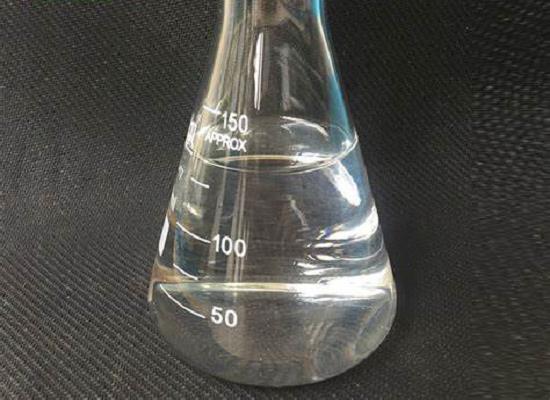Stannous methanesulfonate: properties, applications and safety
Oct 26,2023
General Description
Stannous methanesulfonate is a colorless liquid with a distinct odor. It is water-soluble, reactive, and acts as a catalyst in organic reactions. The compound has a melting point of approximately 140-150°C and a boiling point of around 330°C. It is stable when stored away from oxygen and moisture, and exhibits high thermal stability. Stannous methanesulfonate is widely used in electroless plating processes for enhancing conductivity, corrosion resistance, and solderability. It finds applications in industries such as electronics, automotive, and aerospace. Safety precautions include handling in a well-ventilated area, wearing protective clothing, and using non-sparking tools to prevent fire risks.

Figure 1. Stannous methanesulfonate
Properties
Stannous methanesulfonate is a chemical compound that exists in the form of a colorless and transparent liquid. It possesses a distinct odor reminiscent of rotten eggs. In terms of its properties, stannous methanesulfonate is a water-soluble compound that is highly reactive and can easily catalyze a range of organic reactions. It has a melting point of approximately 140-150°C and a boiling point of around 330°C, and is stable when stored away from oxygen and moisture. Stannous methanesulfonate is also notable for its high thermal stability, making it a useful catalyst in high-temperature reactions. Additionally, it exhibits good selectivity in various organic transformations, allowing for efficient and effective synthesis of a variety of chemical compounds. Overall, stannous methanesulfonate is a versatile and effective catalyst with a wide range of applications in organic chemistry, owing to its unique properties of water solubility, high thermal stability, and selectivity. 1
Applications
Stannous methanesulfonate is a compound that finds significant application in the electroless plating process. This compound serves as a reducing agent in this process, facilitating the deposition of a thin layer of metal onto a substrate. The electroless plating process holds great importance in various industries, including electronics, automotive, and aerospace. It involves the coating of materials such as copper, nickel, or gold onto surfaces with the purpose of enhancing conductivity, corrosion resistance, and solderability. In the electronics industry, stannous methanesulfonate is utilized to create conductive coatings on printed circuit boards (PCBs) and electrical connectors. By depositing a thin layer of metal, it helps to form reliable electrical connections and ensures efficient signal transmission within electronic devices. In the automotive sector, this compound plays a crucial role in plating components like engine parts, fuel system parts, and connectors. The metal layer deposited using stannous methanesulfonate helps to improve the strength, durability, and resistance to wear and corrosion of these components, thereby enhancing their overall performance and longevity. Furthermore, the aerospace industry extensively utilizes stannous methanesulfonate for electroless plating applications. It enables the deposition of metal layers on aircraft components, such as avionic systems, connectors, and radar systems. These coatings provide enhanced conductivity and corrosion protection, ensuring the reliability and longevity of critical aerospace equipment. Overall, stannous methanesulfonate, as a key component in the electroless plating process, finds widespread applications in industries such as electronics, automotive, and aerospace. 2
Safety
Safety is of utmost importance when handling Stannous methanesulfonate, with certain precautions to be taken to ensure a safe working environment. It is advisable to handle this compound in a well-ventilated area to prevent the accumulation of vapors or fumes. When working with Stannous methanesulfonate, it is crucial to wear appropriate protective clothing, including gloves and goggles, to avoid direct contact with the skin and eyes. This precautionary measure helps minimize the risk of irritation or chemical burns. To prevent the formation of dust or aerosols, which can potentially lead to inhalation or dispersion of the compound, it is important to handle Stannous methanesulfonate with care and avoid any actions that may result in its fine particulate form. Non-sparking tools should be used during the handling process to prevent the risk of fire or explosion caused by sparks or static electricity. Additionally, it is necessary to take precautions against potential sources of ignition, such as electrostatic discharge or open flames. In summary, ensuring safety when working with Stannous methanesulfonate involves handling it in a well-ventilated area, wearing appropriate protective clothing, preventing the formation of dust and aerosols, using non-sparking tools, and avoiding fire risks caused by electrostatic discharge. 3
Reference
1. PubChem. COMPOUND SUMMARY: Methanesulfonic acid, tin(2+) salt. National Library of Medicine, 2006, CID: 6452824.
2. Algirdas Vakelis, et al. Silver nanostructured catalyst for modification of dielectrics surface.Electrochim Acta, 2005, 50(23): 4586-4591.
3. Substance Infocard: Tin(II) bis(methanesulfonate). European Chemicals Agency, EC: 401-640-7.
- Related articles
- Related Qustion
- Stannous Methanesulfonate: Electrolytic Preparation and Applications in Proteomics Oct 31, 2024
Stannous methanesulfonate is a kind of important organo-tin compound, be widely used in organic synthesis and the eleetrotinplate technology.
- What is Tin(II) methanesulfonate? Jan 6, 2020
Tin(II) methanesulfonate is used in electroplating industry. Tin methanesulfonate is an aqueous solution used in the metal surface treatment. Mainly as a replacement for Tin sulfate where high speed deposits are needed (reel-to-reel).
2,5-Dichloroaniline has various applications but can be a source of toxic chemicals in paints, while also showing promise in antimicrobial agent synthesis.....
Oct 25,2023API1-Fluoronaphthalene is a fluorinated aromatic compound used as a solvent additive in organic solar cell research, with safety precautions for handling.....
Oct 26,2023APIStannous methanesulfonate
53408-94-9You may like
Stannous methanesulfonate manufacturers
- Tin(II) methanesulfonate
-

- 2025-12-13
- CAS:53408-94-9
- Min. Order:
- Purity: 0.99
- Supply Ability:
- Stannous methanesulfonate
-
- $1.00 / 1kg
- 2025-12-11
- CAS:53408-94-9
- Min. Order: 1kg
- Purity: 99%
- Supply Ability: 10 mt
- Stannous Methane Sulfonate
-

- $9375.00 / 1000KG
- 2025-10-14
- CAS:53408-94-9
- Min. Order: 1KG
- Purity: Sn 300g/l
- Supply Ability: 300 tons






